Spanish Memory BookA NEW APPROACH TO VOCABULARY BUILDINGJunior Edition BY WILLIAM F. HARRISON AND DOROTHY WINTERS WELKER ILLUSTRATIONS BY ANITA NELSON  University of Texas Press
University of Texas Press
Austin Copyright 1993 by the University of Texas Press All rights reserved First edition, 1993 Requests for permission to reproduce material from this work should be sent to Permissions, University of Texas Press, Box 7819, Austin, TX 78713-7819. Library of Congress Cataloging-in-Publication Data Harrison, William F., 1934 Spanish memory book : a new approach to vocabulary building / by William F. Harrison and Dorothy Winters Welker ; illustrations by Anita Nelson. Junior ed., 1st ed. cm. cm.
Summary: Provides mnemonic devices for committing about 350 Spanish words to memory. ISBN 0-292-73079-9 (alk. paper). ISBN 0-292-73081-0 (pbk. : alk. paper) 1.
Spanish languageVocabulary. [1. Spanish languageVocabulary.] I. Welker, Dorothy Winters, 1905 . II. III. Title. Title.
PC4445.H37 1993 468.1dc20 93-12717 ISBN 978-0-292-75791-2 (library e-book)
ISBN 978-0-292-75783-7 (individual e-book) doi 10.7560/730793 To the Reader In learning a new language, one of your first goals is to acquire a large stock of useful words in that language. The Spanish Memory Book, Junior Edition, is designed to help you learn Spanish words easily and fast and to recall them at will. It will enable you to recognize Spanish words when you see or hear them (passive vocabulary), and to recall these words when you speak or write Spanish (active vocabulary). The Spanish Memory Book, Junior Edition, accomplishes this by means of mnemonic devices (memory helps). Mnemonic devices are not new, of course. They have been used for centuries.
We still call upon them every day to remember names, numbers, and many others things: Spring forward in the spring, fall back in the fall. The mnemonic device sets up an association between a new word and old words that enables us to recall the new word. The mnemonic devices used in the Spanish Memory Book are rhymes that help you to remember both the pronunciation of the Spanish words and their English meanings. They fairly jingle the new words into your memory. Research has shown, surprisingly enough, that the more far-fetched, even absurd, a mnemonic device is, the better it helps you remember. You will probably agree that many of the jingles in the Spanish Memory Book qualify for high marks in absurdity.
You will have a good time learning and applying them. The Spanish Memory Book contains about 250 words, which were selected (with a half-dozen exceptions) from the two thousand most useful words in Spanish. Note These words are listed in order of usefulness in the Graded Spanish Wordbook, compiled by Milton A. Buchanan, 3d ed., Toronto: University of Toronto Press, 1941. How to Use theSpanish Memory Book Read the Spanish entry and the corresponding jingle, for example: bailarto danceBuy lar ger shoes to dance in. Buy smaller pants to prance in.
The word to be learned is bailar, English to dance. Incorporated in the jingle is a consecutive series of English sounds that resemble the sounds of Spanish bailar. These sounds are buy lar, and are underscored. Say the underscored syllables carefully, making sure you pronounce them exactly as you pronounce them in the English word. Then note the corresponding English words (to dance), which are also incorporated in the jingle and which are set in bold italics. Now look away from the book and ask yourself, What is the English word for bailar? Chances are you will come up at once with to dance. If not, just read the jingle once more.
Shall we do another word? dedotoe Each day , though chased by hordes of mice, We search our grimy toes for lice. Here English day though gives the sound of Spanish dedo. The English equivalent is toe. And here is one more. Do it on your own. puntopoint When Bens har poon to re up the joint I guess the owner got the point.Conventions Used in This Book 1. The jingles approximate as closely as possible the sounds and stresses of the Spanish words.
When exactitude is not possible, the Spanish syllables are approximated. For the fine points of pronunciation, turn to a Spanish textbook or to your Spanish teacher. A table of pronunciations is provided in this book as a convenient reference. 2. The English equivalent of the Spanish word may appear in a jingle in any convenient form. For example, a verb may be in any tense.
A noun may be either singular or plural. The main Spanish entry (alphabetical) always gives the infinitive of verbs and the singular of nouns. 3. The gender of nouns is given, except for nouns ending in o, which are usually masculine, or in a, usually feminine. Endings are given for adjectives that indicate gender by o and a. 4.
To make possible the inclusion of many Spanish words containing the sound a (English hot, father), the Memory Book occasionally replaces this sound by one of two similar sounds: (English about) or (English caught). This liberty has been taken only in unstressed syllables. Note: The Memory Book is aimed primarily at helping you learn vocabulary. It cannot give conjugations of verbs, rules of sentence structure, or fine points of pronunciation. To do so would reduce the number of words that could be included and would encroach on the territory of language teachers and of grammar and linguistics textbooks. VOWELSAND DIPHTHONGS
| Spanish | English Approximation |
| a | a in father |
| ai/all/ay | eye |
| au | town |
| e | take |
| ei/ell/ey | weigh; similar to Spanish e, but longer |
| i | machine |
| io/yo | yoke |
| o | no |
| oi/oll/oy | boy |
| u | Susan; silent between g and i, between g and e, and after q |
| uo | woe |
| ua | squat |
| ue | way |
CONSONANTS| Spanish | English Approximation |
| b/v | banana at the beginning of a sentence or of a word-group within a sentence, and after m |
Next page
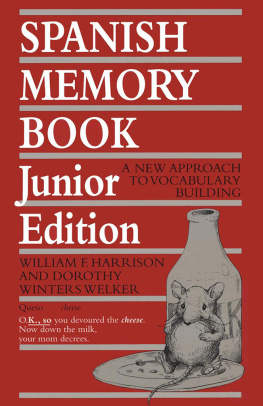
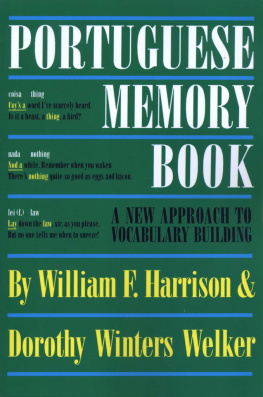


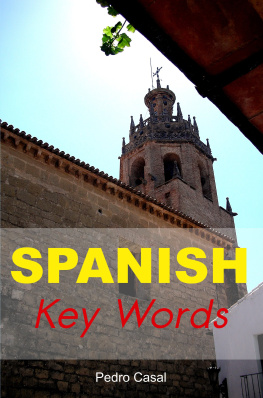


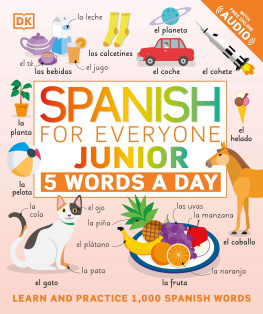

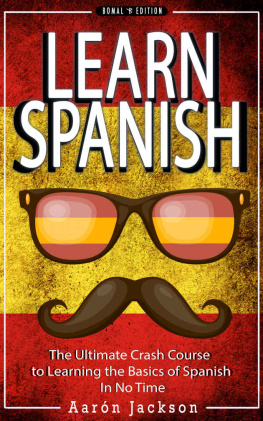

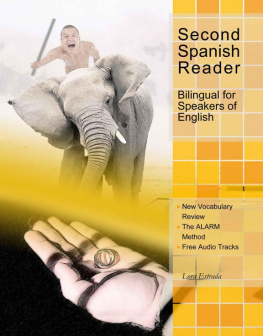
 University of Texas Press
University of Texas Press